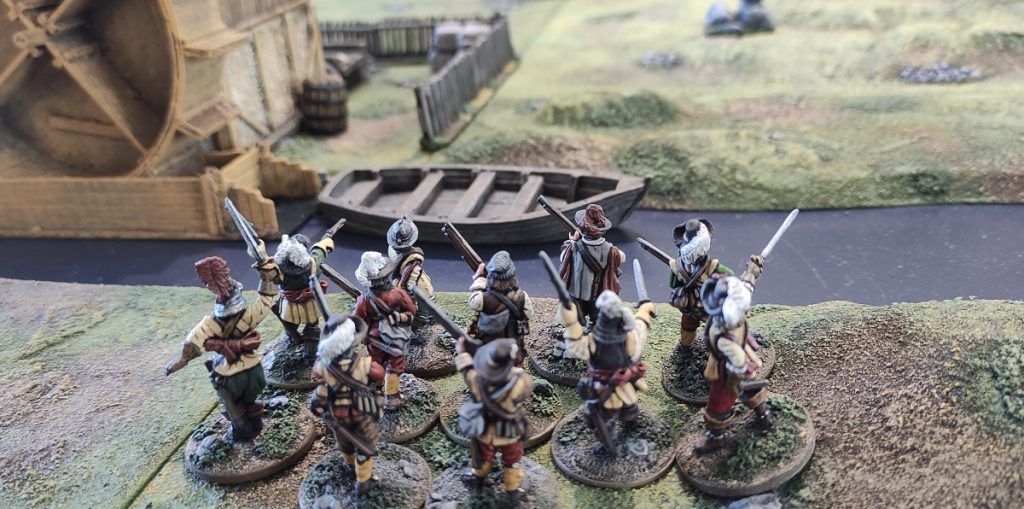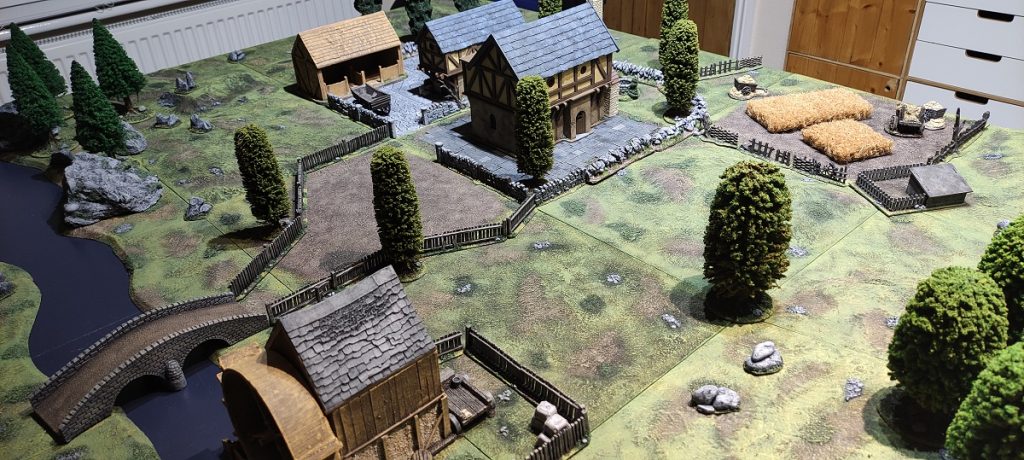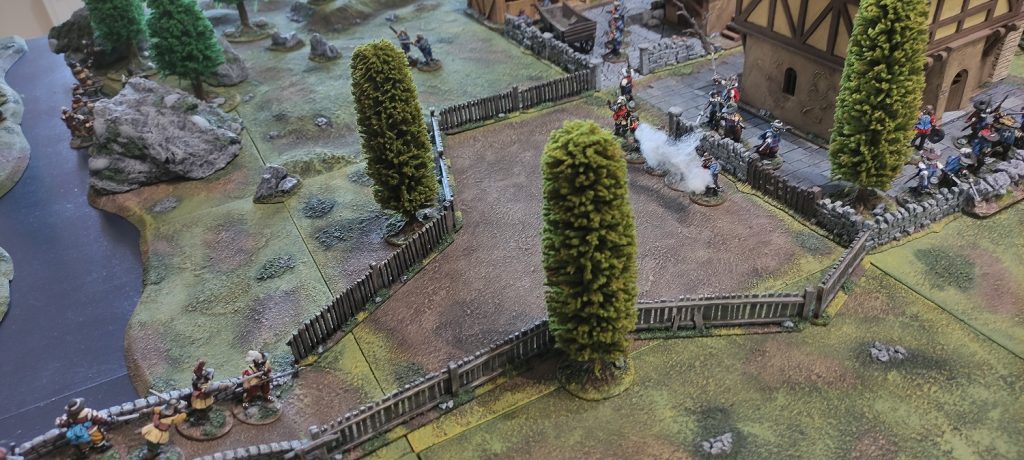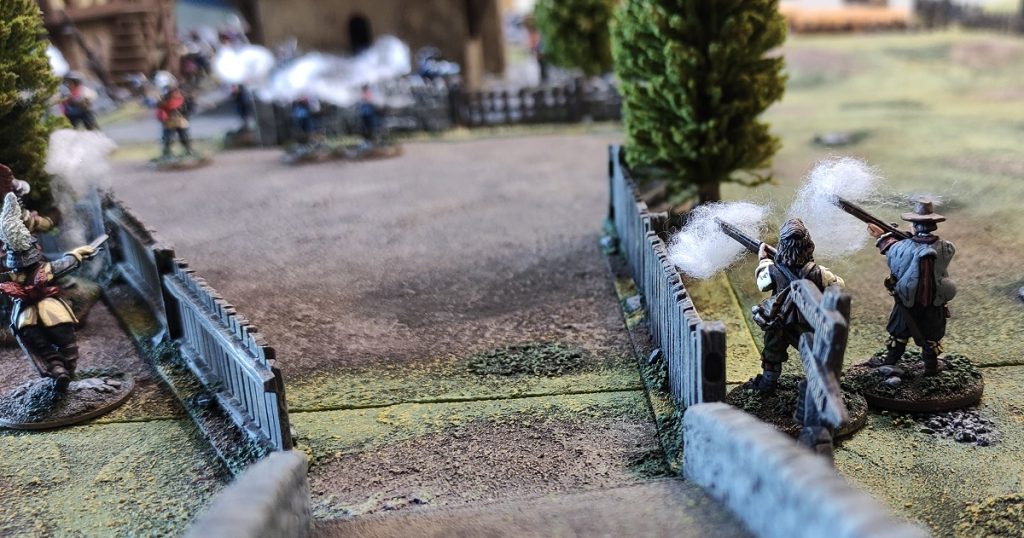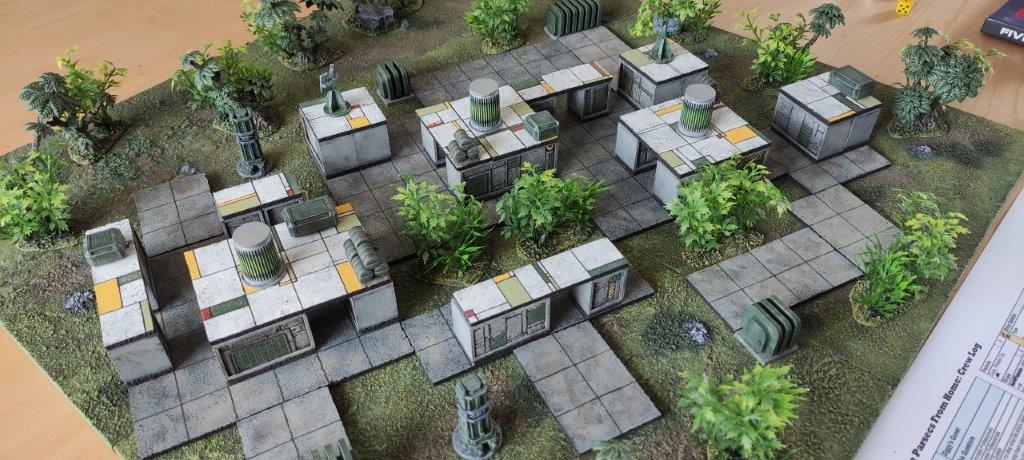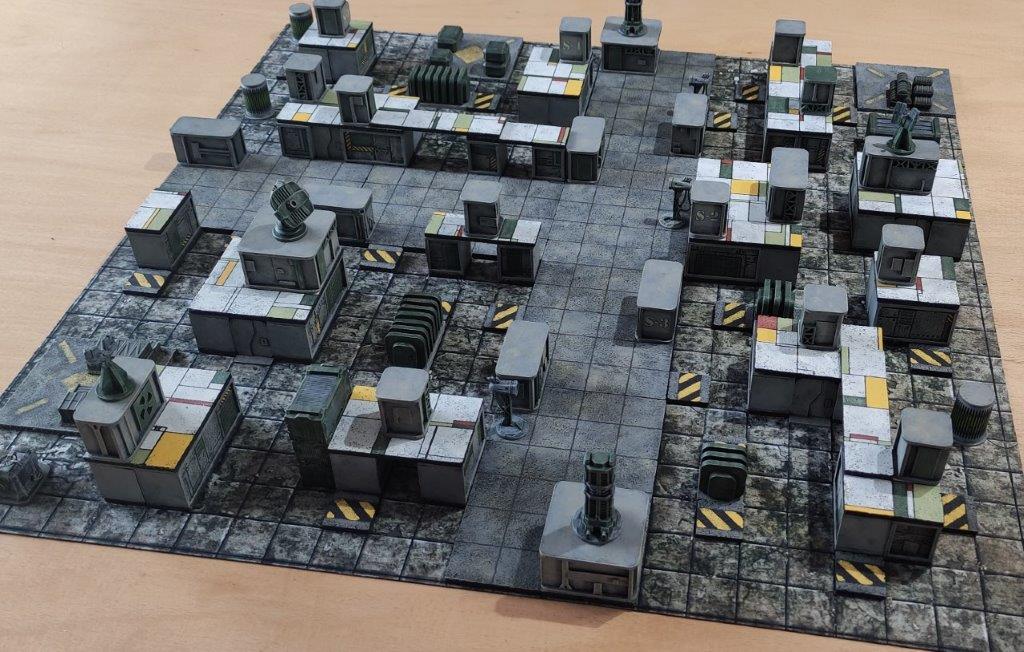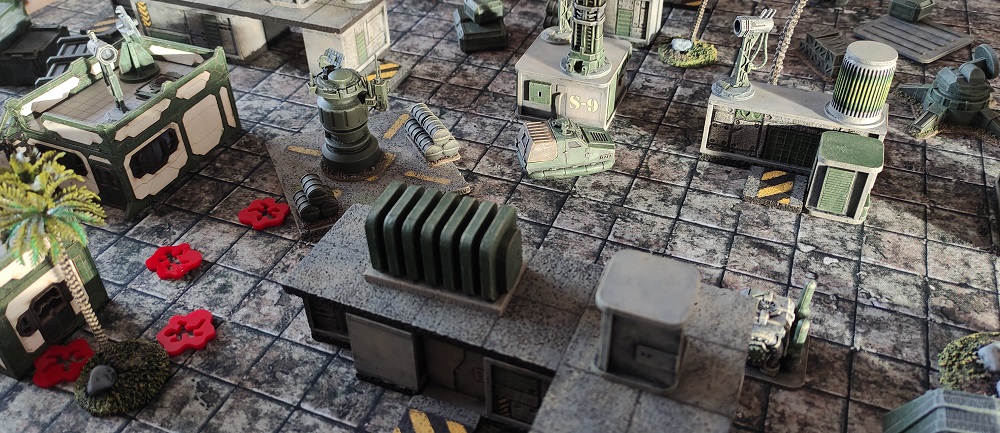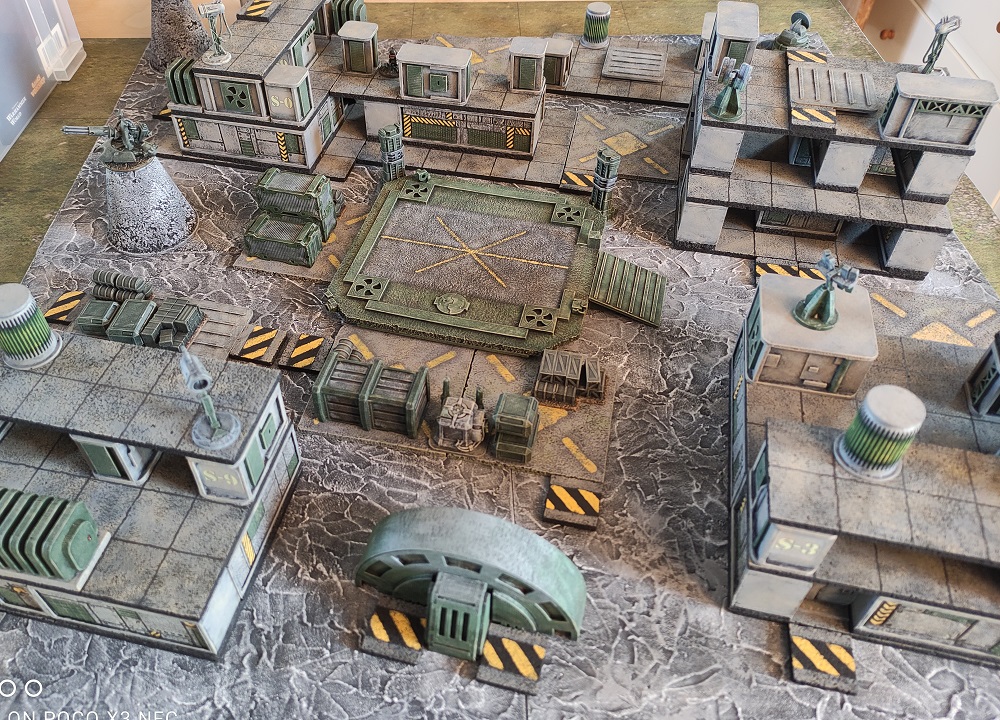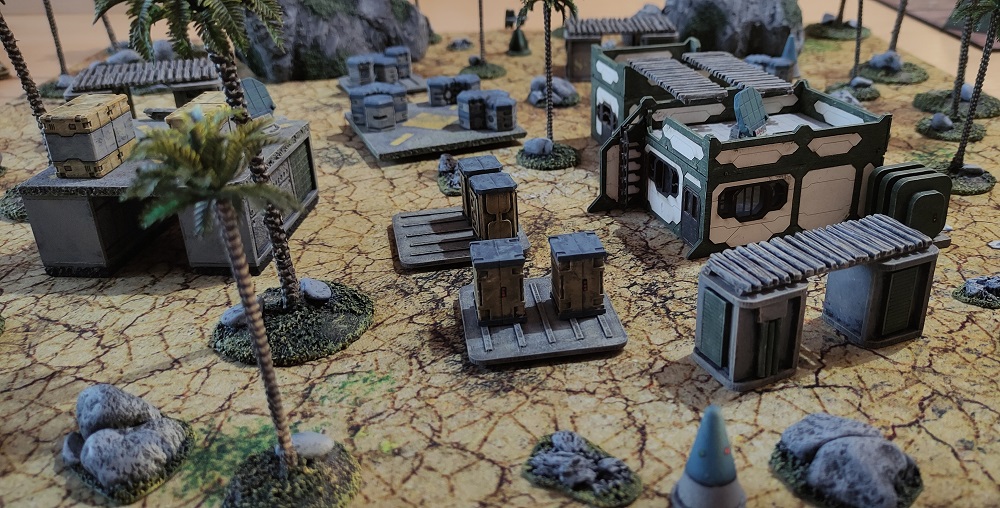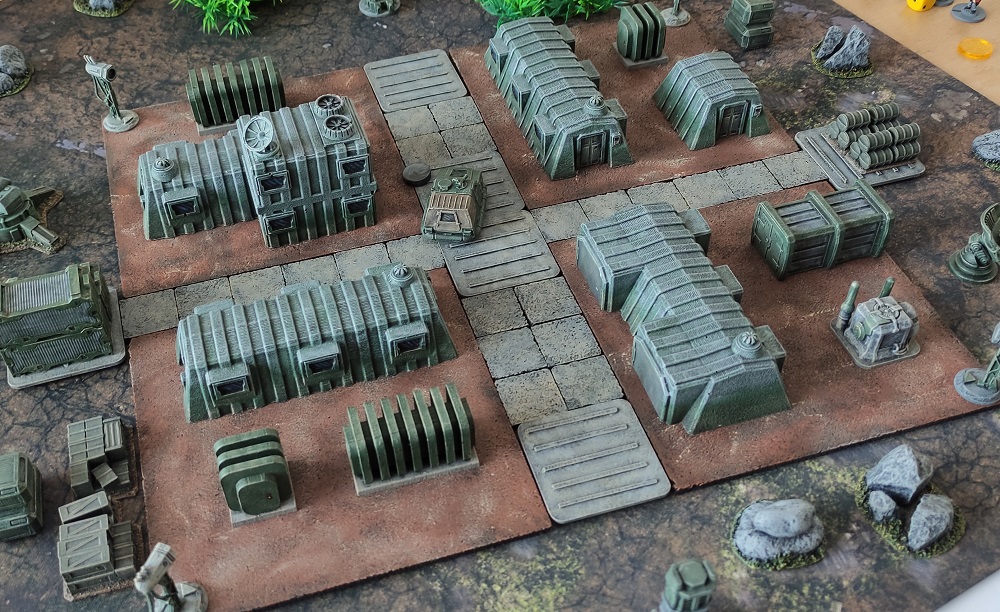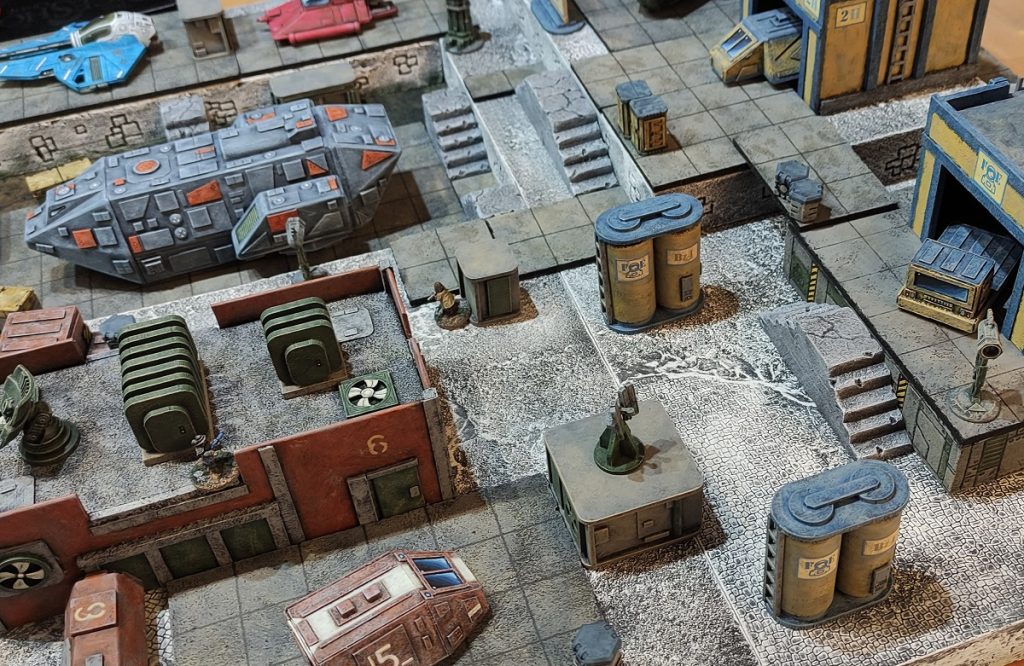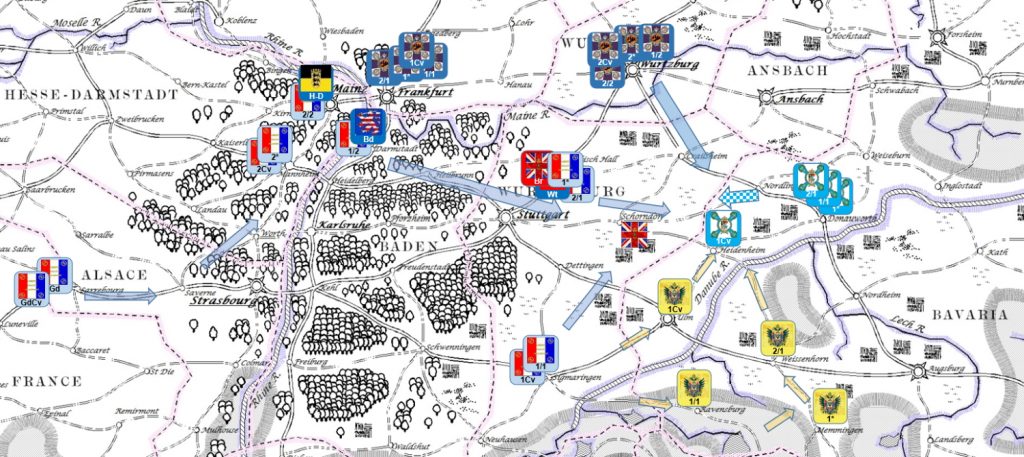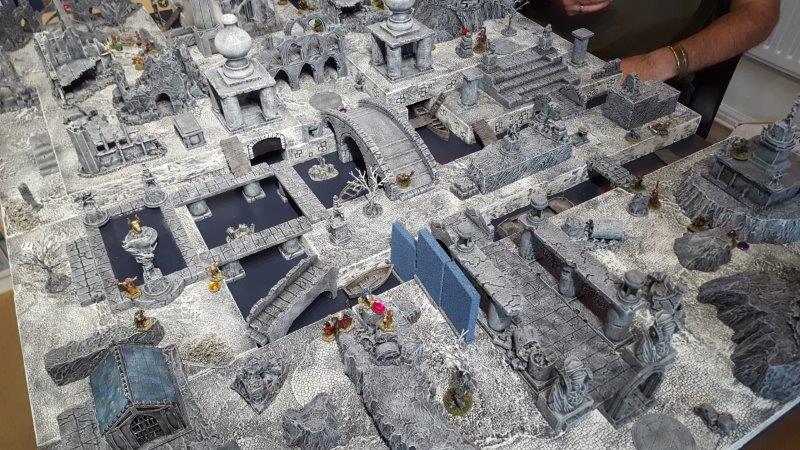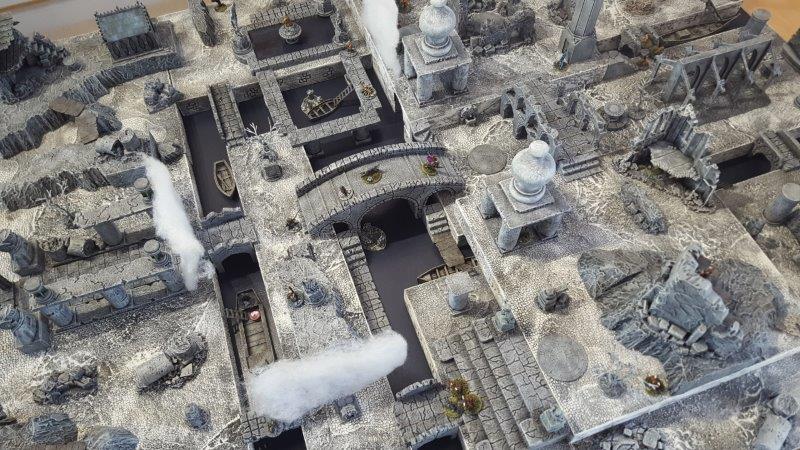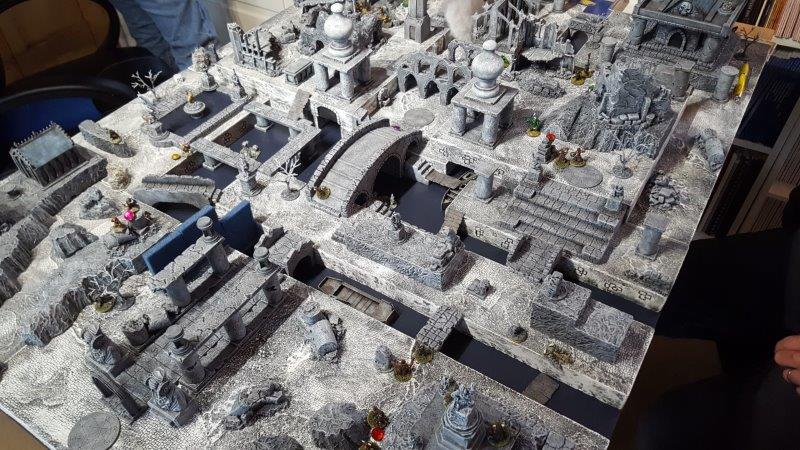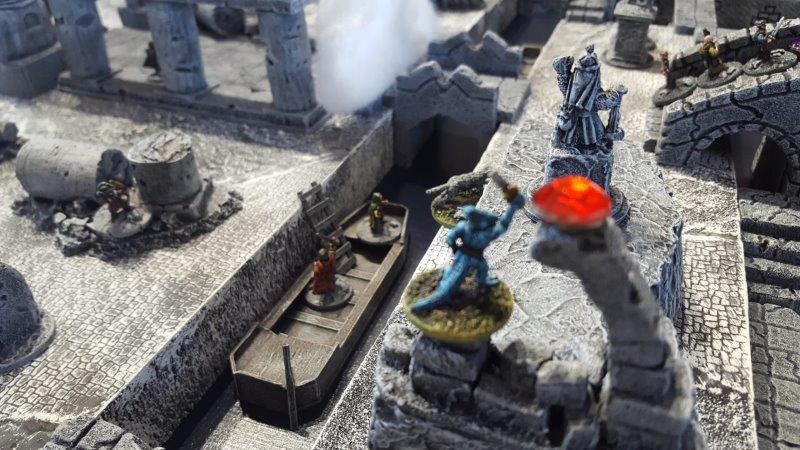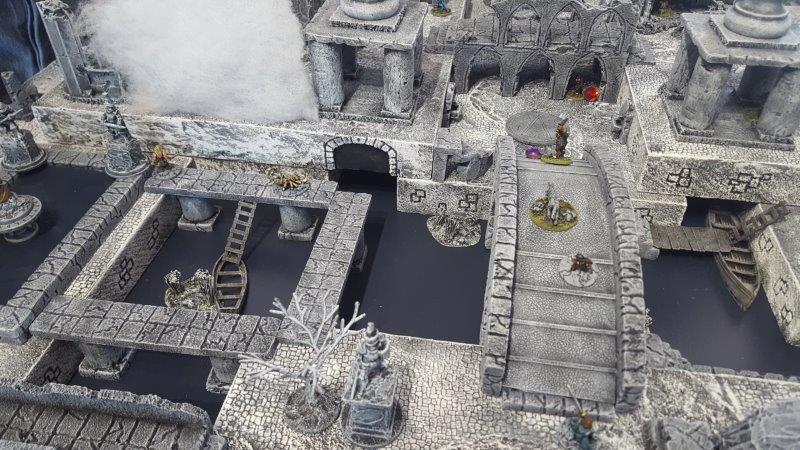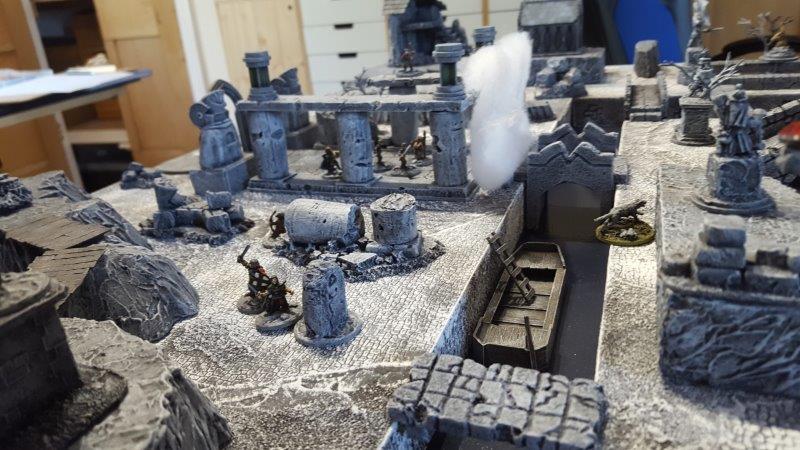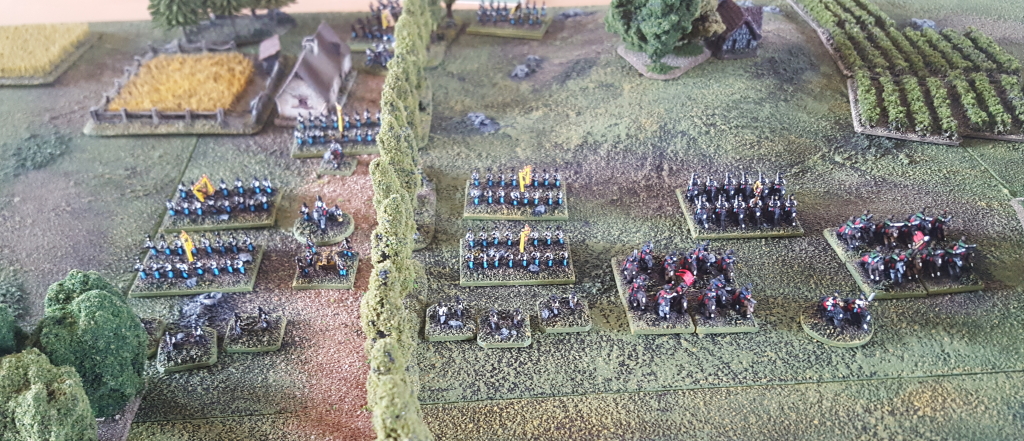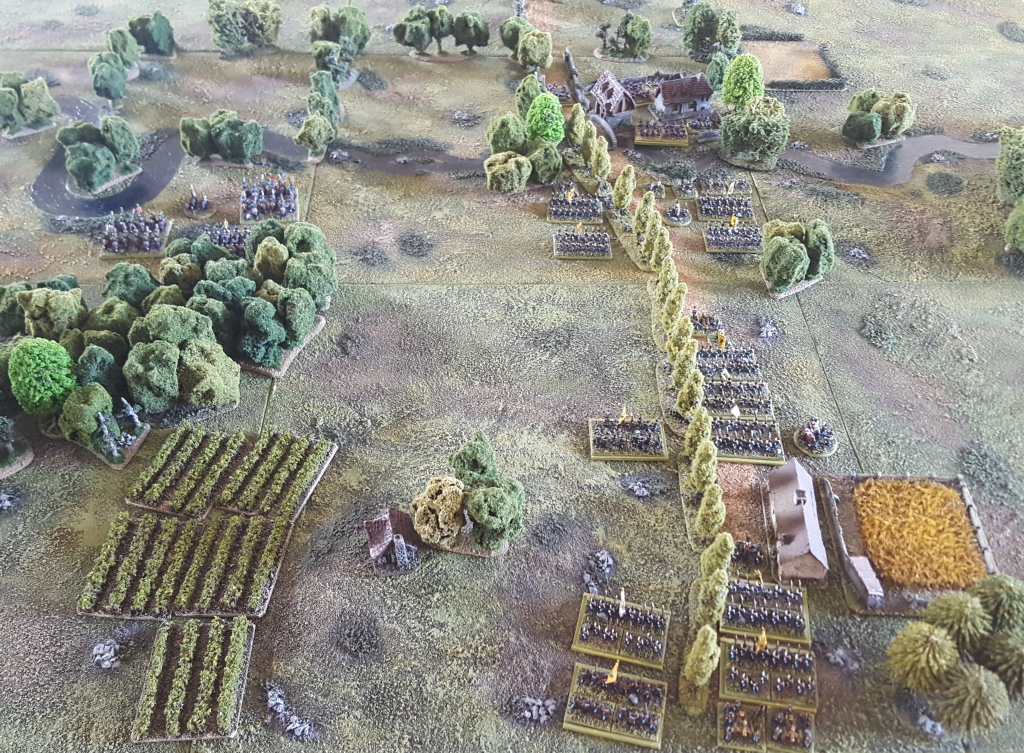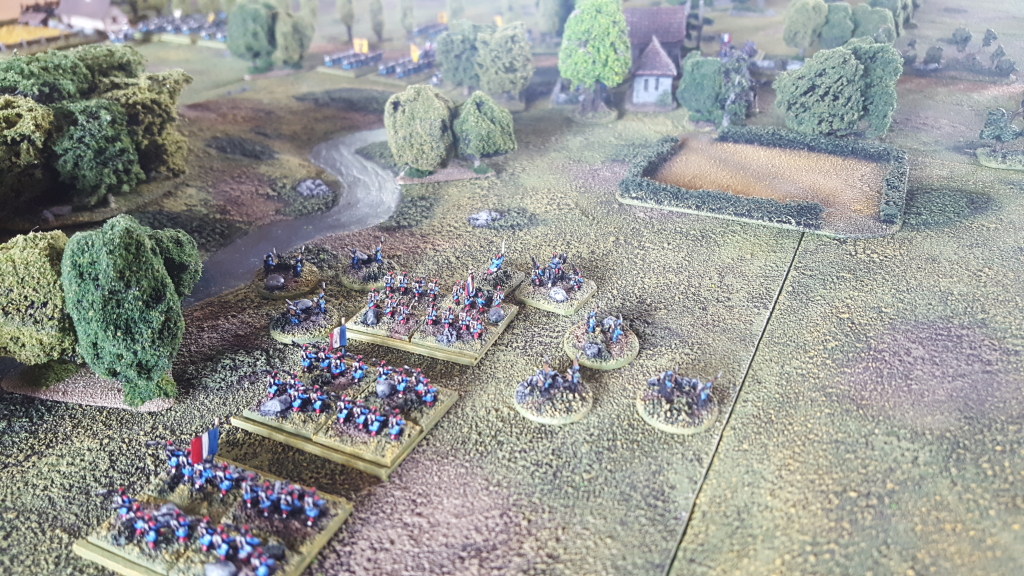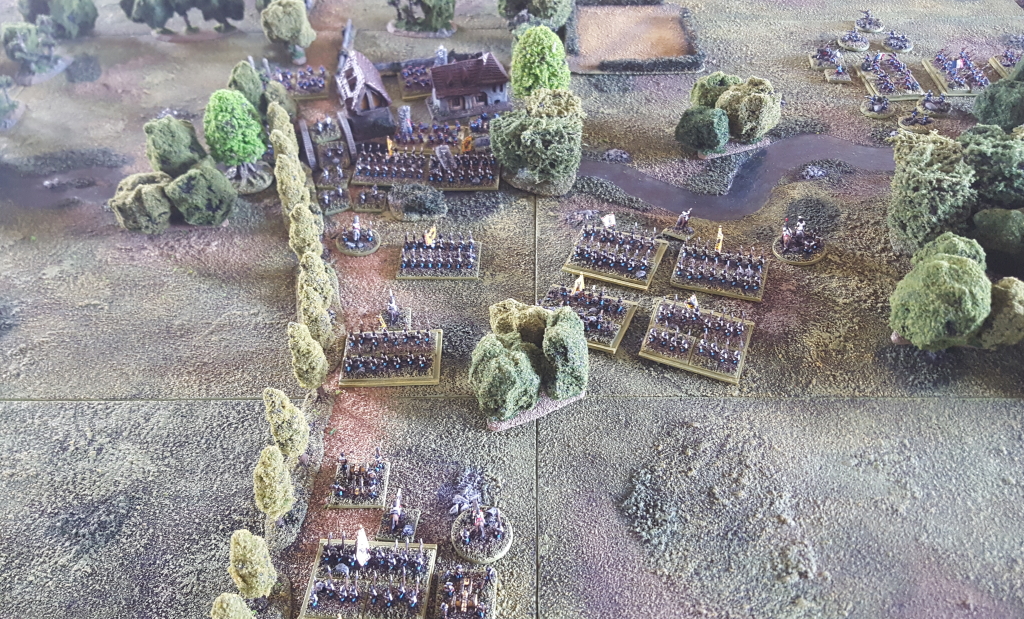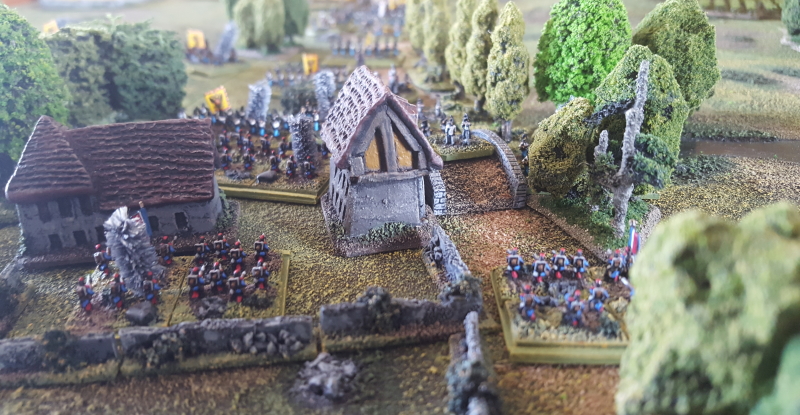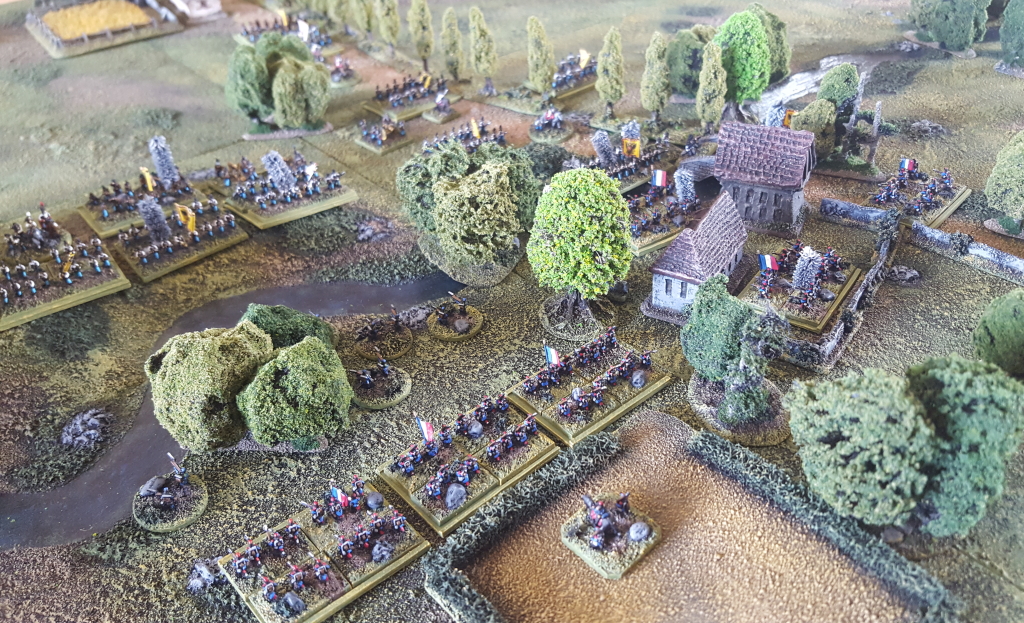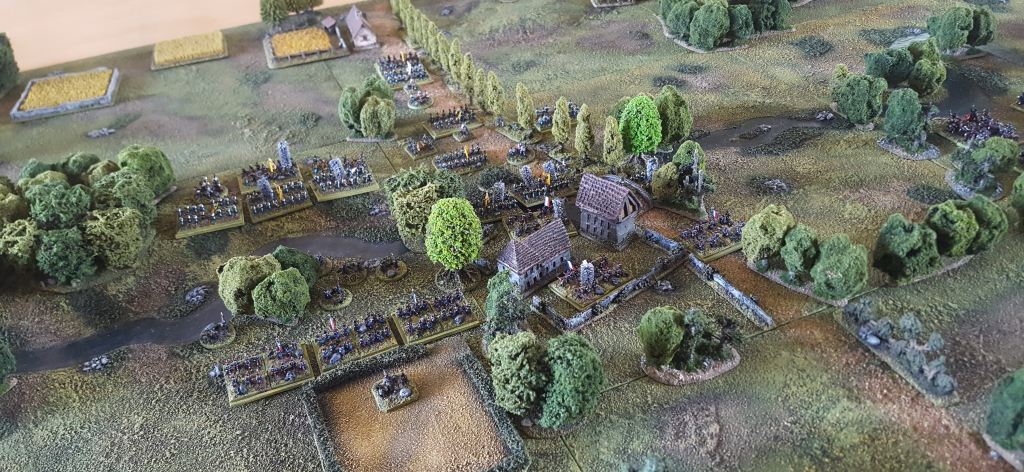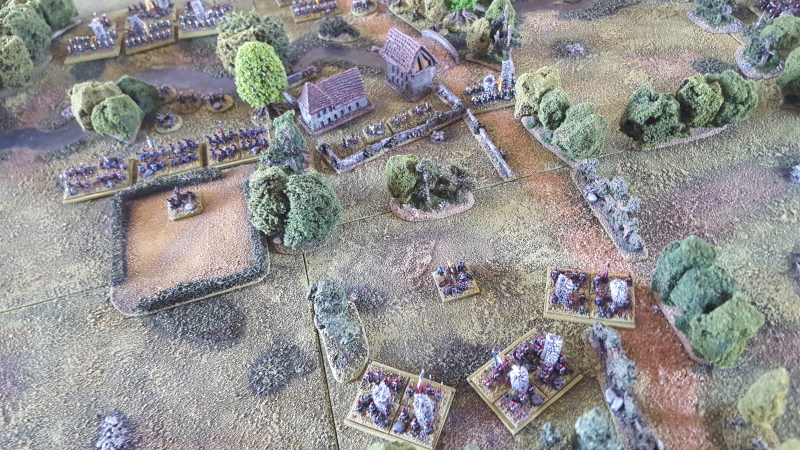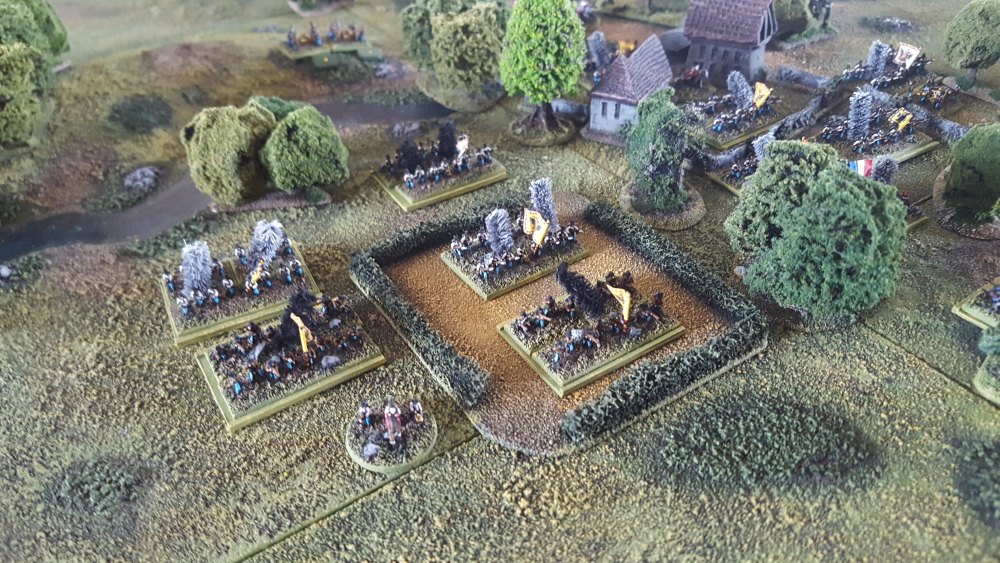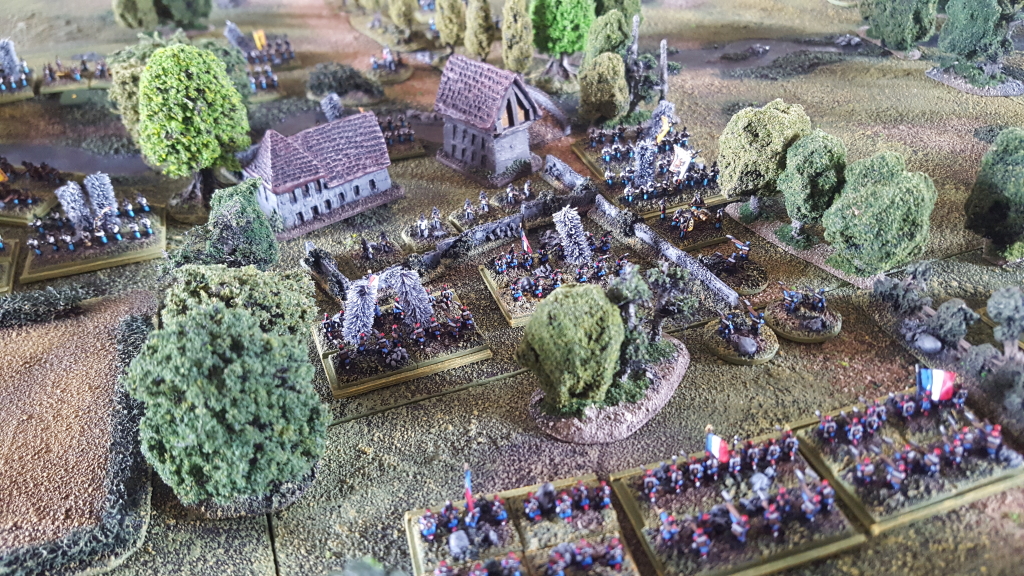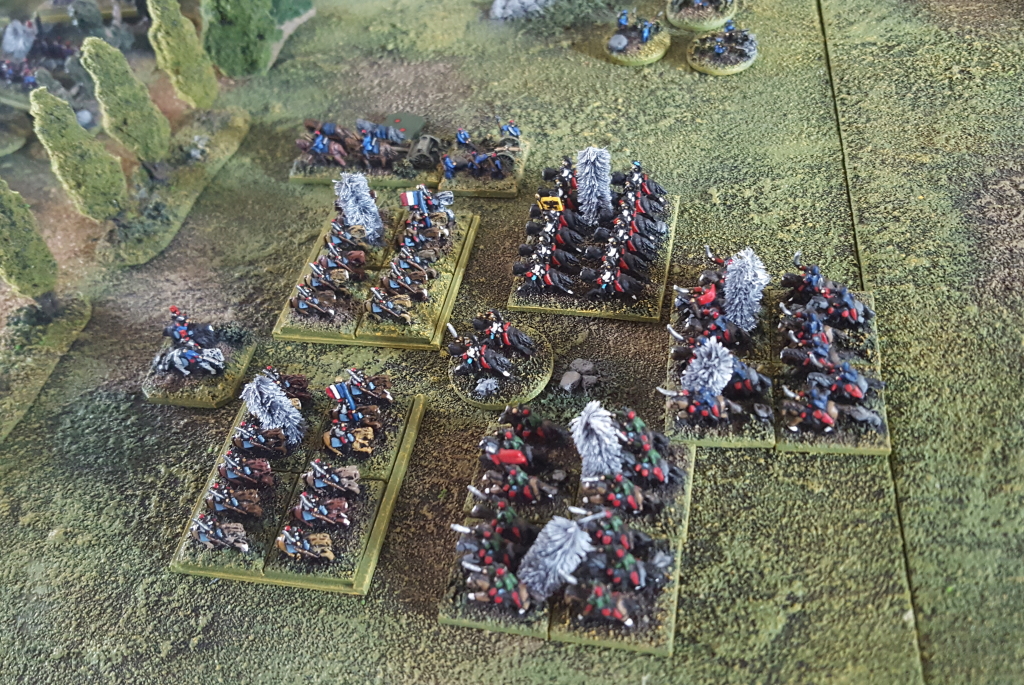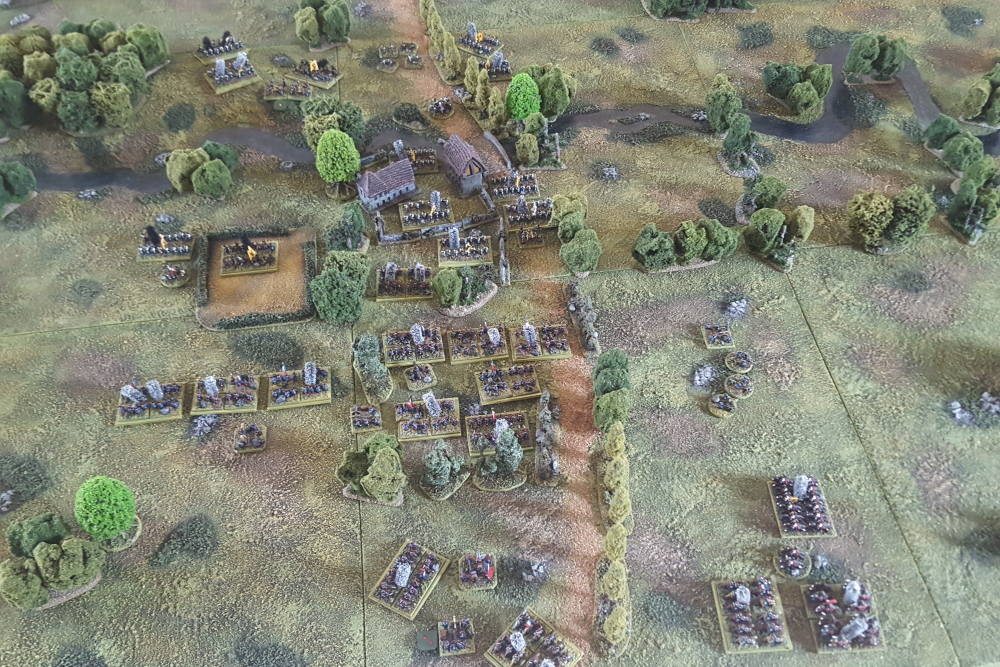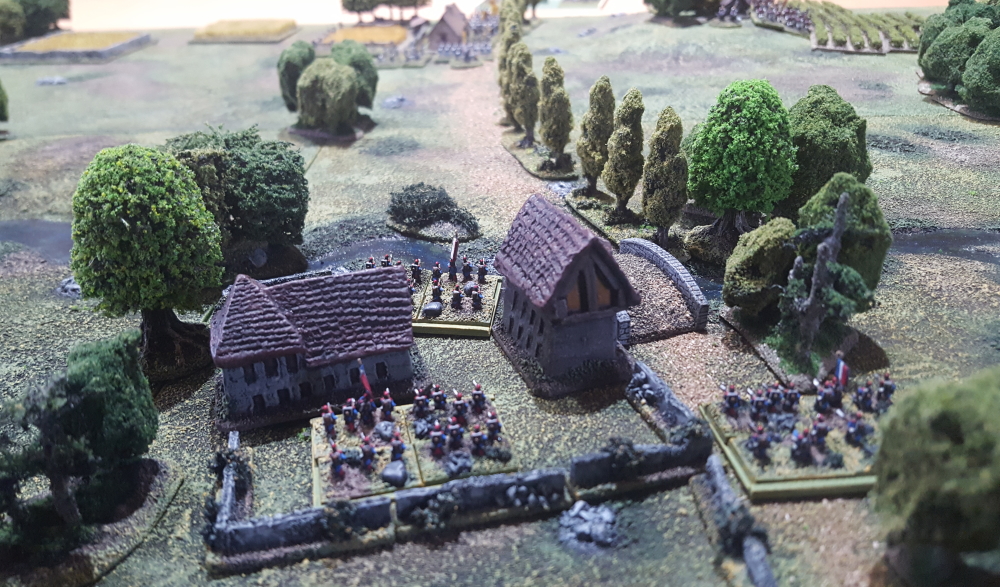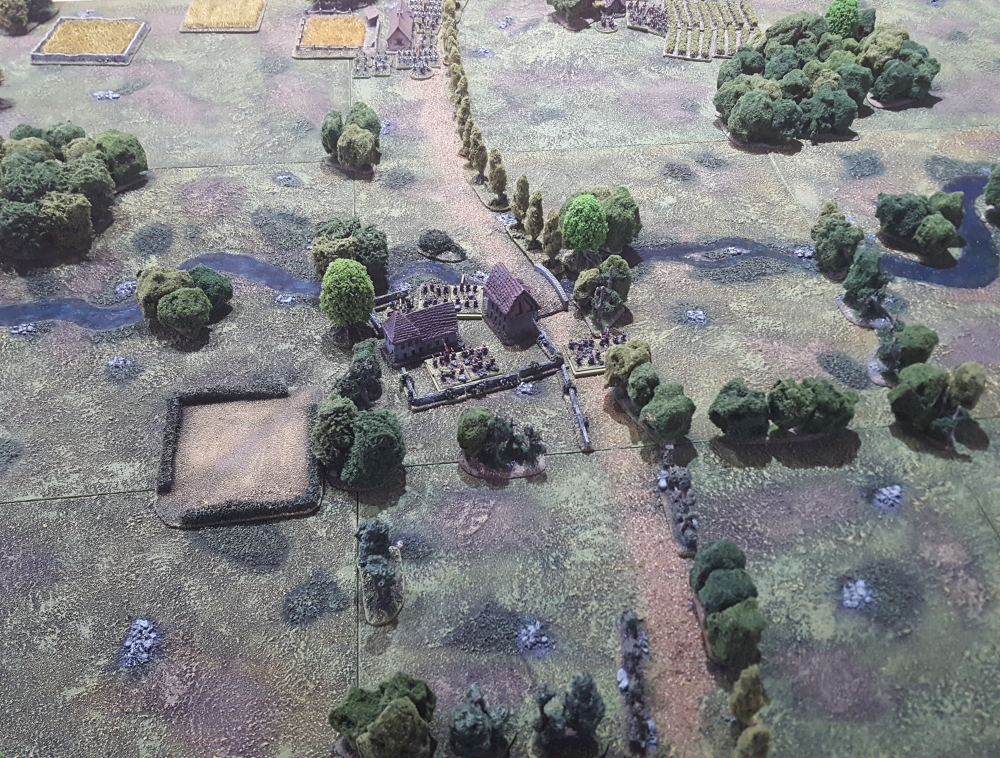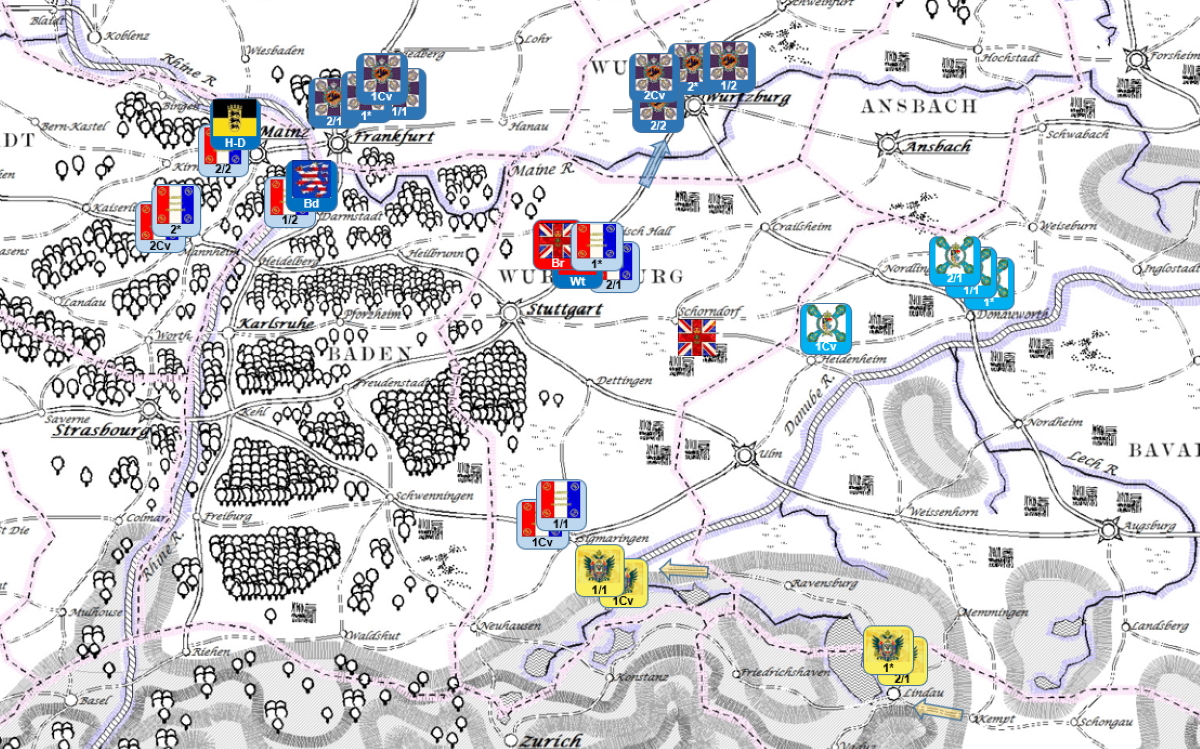The Elector of Schwarzenburg’s Minister of State had received word that there had been no communications with the small harbour town of Marstadt for several weeks. Concerned by this strange state of affairs (and acting in his capacity as chief of the intelligence service and various other murky government functions), he despatched three officers of the Electoral Guard familiar with undertaking special and unusual missions. Tasked with finding out what is happening at Marstadt they were accompanied by a small party of the regiment’s soldiers and a priest because, you know, just in case…
After three days in the saddle Captain Mockern and his men reached the edge of town on a cold winter’s morning. No-one was about, and the place had an odd stillness about it.
The grey dawn at Marstadt:
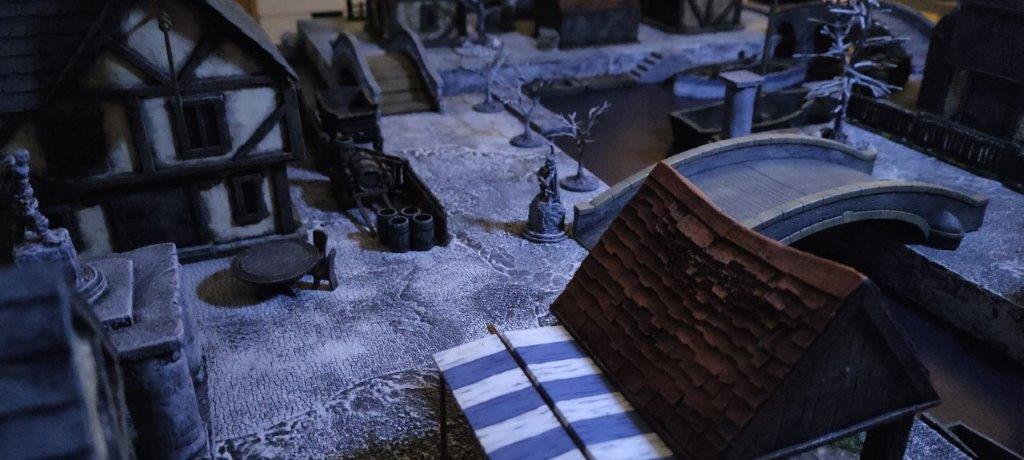
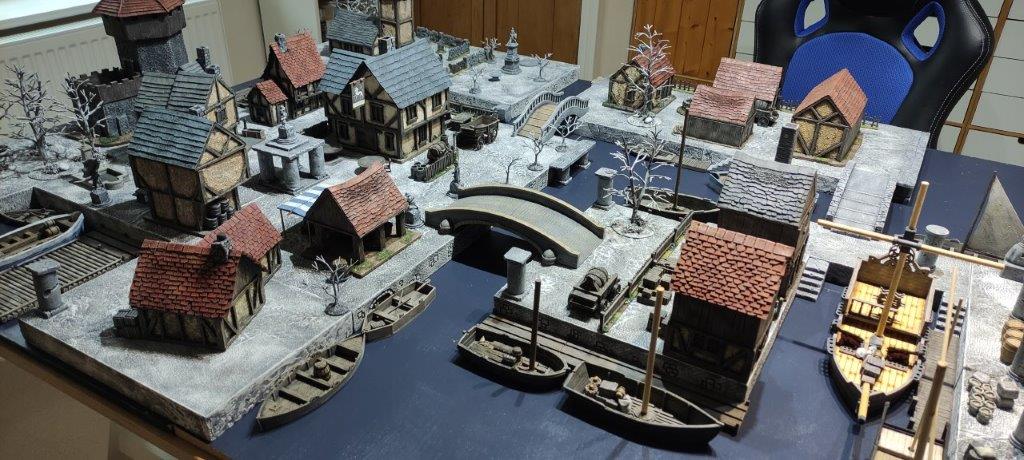
Mockern’s instincts told him to proceed with caution. He decided to cover more ground as he entered the town so split his men into two groups, one led by himself and his ensign, Goeben, and the other by lieutenant Hommel, supported by sergeant Flunkt and Father Rutter.
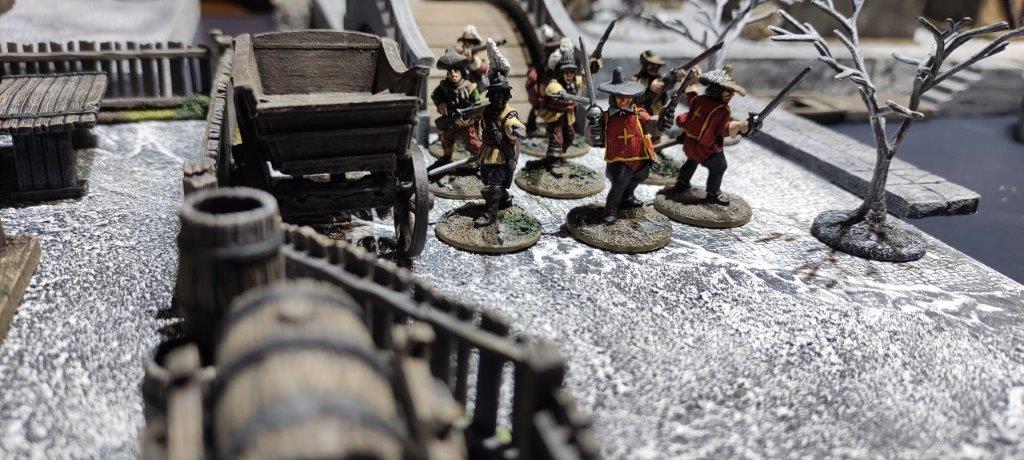
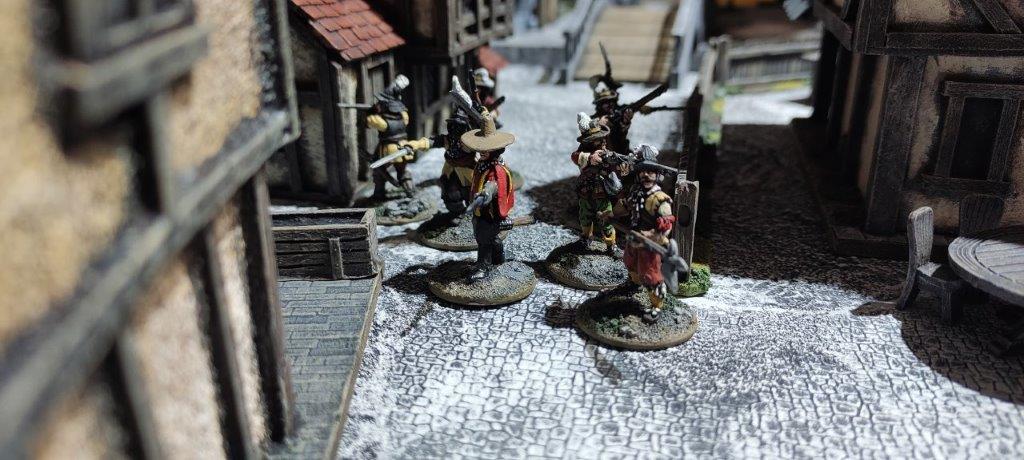
The town appeared and felt to be utterly empty. However, as their footsteps crunched on the frosty ground, another sound was suddenly heard. There was a low rumbling growl and then a fearsome beast rounded a nearby building. Shouts of alarm sounded, as did the discharge of pistols and muskets.

The monster charged but it was stopped by a hail of bullets. Moments later the party closer to the water was attacked by a giant rat that crept from beneath a wagon. It was quickly dealt with by the alert swordsman guarding the rear.
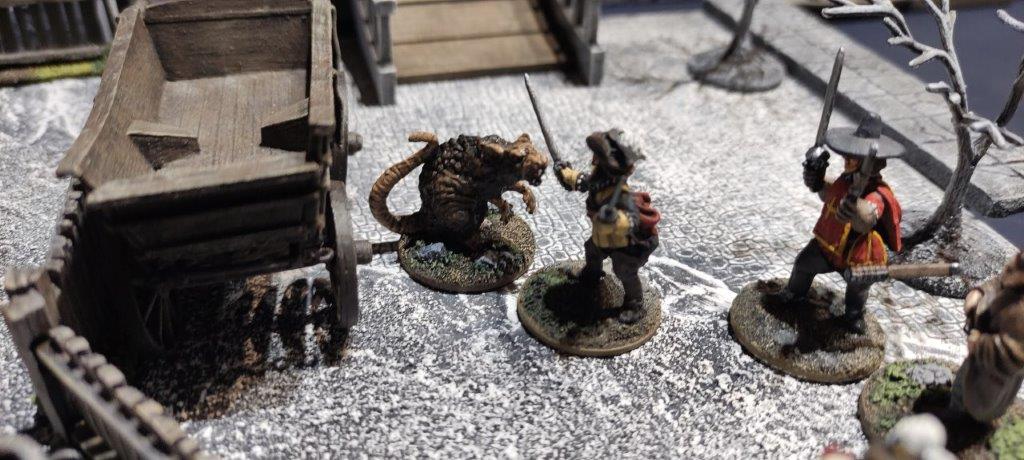
The noise of the shots and cries echoed across the eerie harbour, but as it faded it was replaced by a dreadful moaning from all around, accompanied by the roars and howls of unnatural beasts. The men reloaded and readied their weapons, gathering themselves between the bridge and the inn.
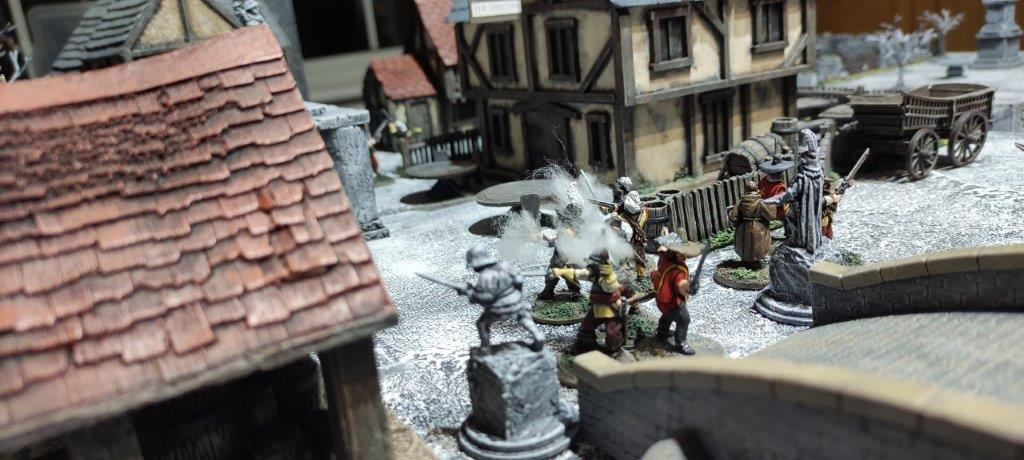

Ghoulish figures and demonic beasts soon emerged and began closing in from all sides. Despite their fear, the men listened to the orders of their officers and the invocations of their holy men, and held their ground.
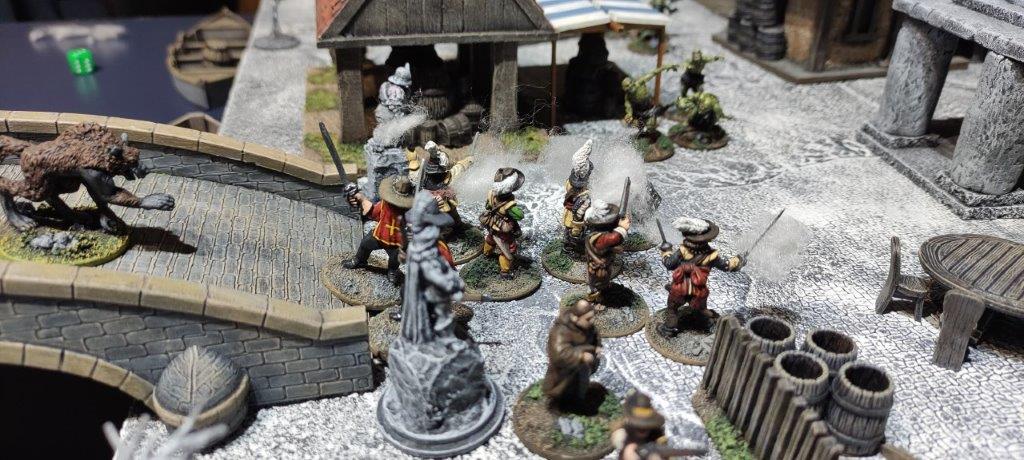

Another huge wolf-like creature pounced and tore the throat from a soldier, before his companions slew the beast in retribution.
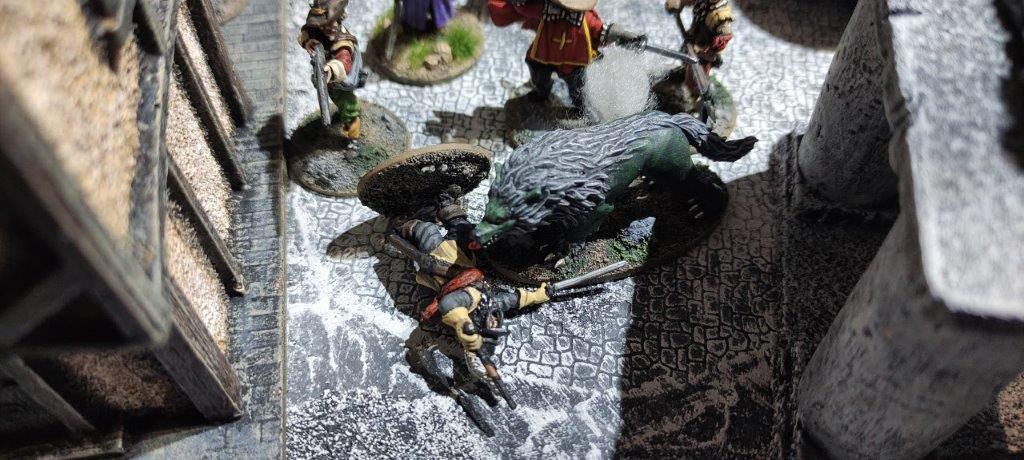
Undead spirits screeched as they attacked, but suddenly some unexpected aid appeared – a few hardy survivors emerged from the inn to strike back at the evil that had overtaken their town.
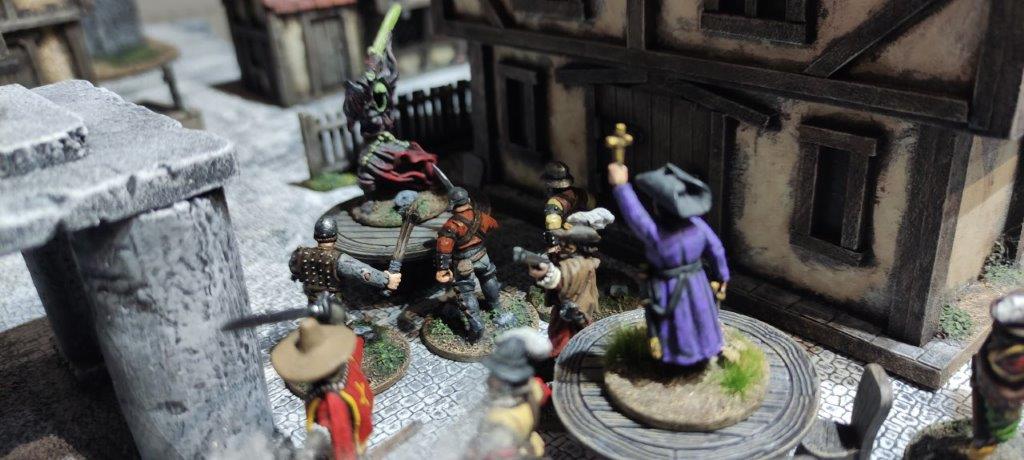
The desperate fighting edged onto the bridge and risked separating the two groups into their own vicious melees. Servants of evil were being cut down, but men were falling too.
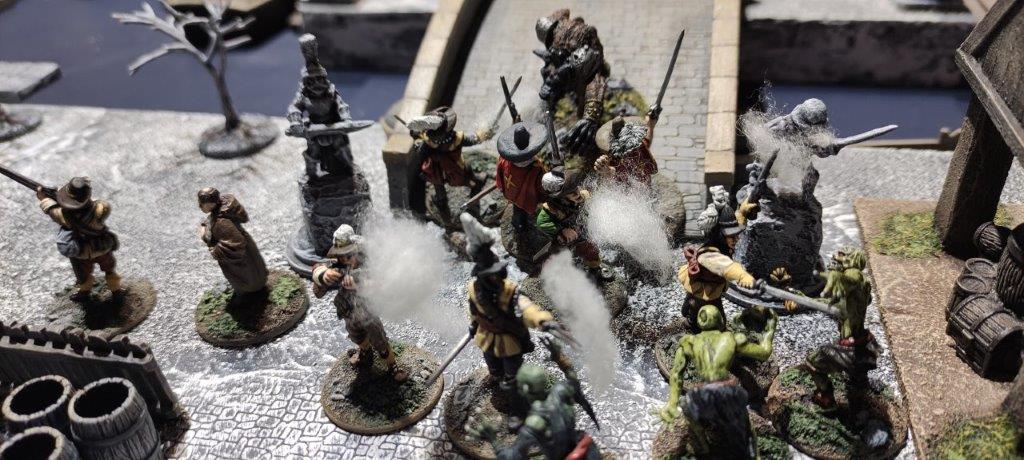
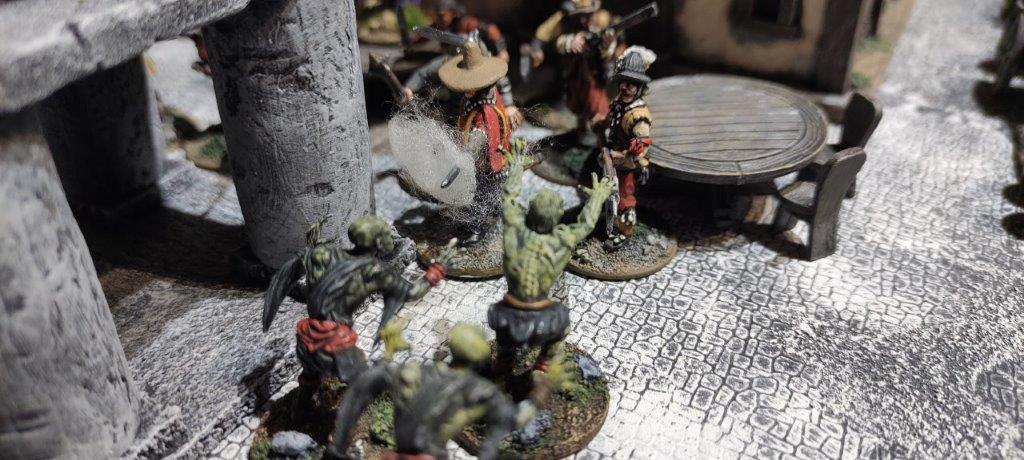
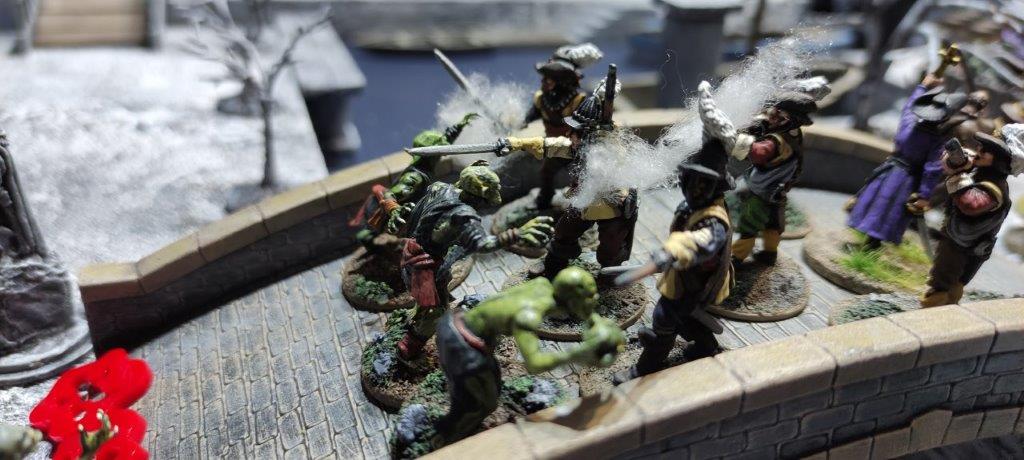
Any man left behind was quickly dragged under by feral enemies.
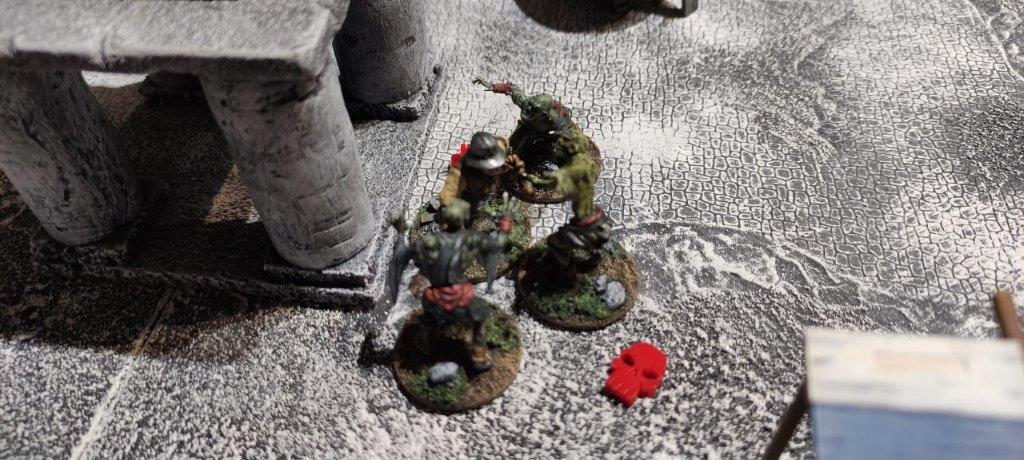
Captain Mockern decided to force his way across the main bridge while his force still had the strength to attempt it. As they reached the dockyard wharf terrible animated bone monsters appeared from the direction of a ship of unusual design, the only large vessel in the harbour.
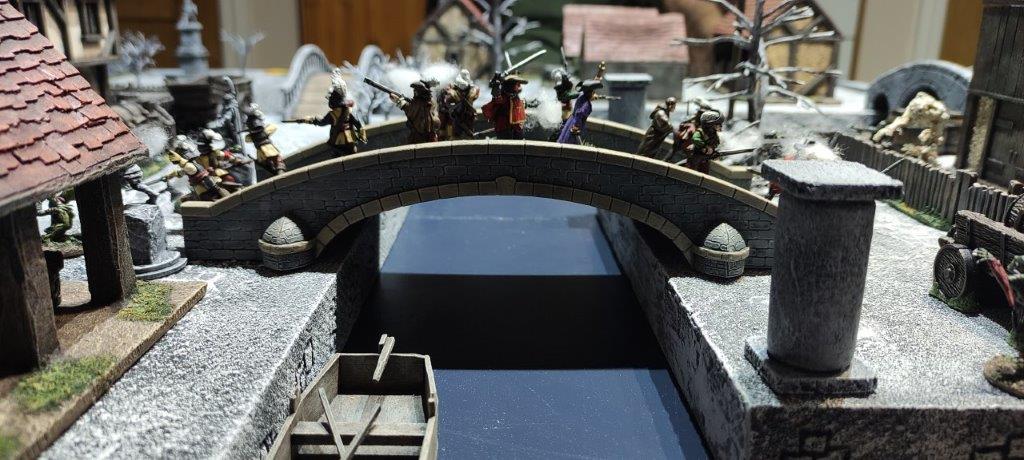
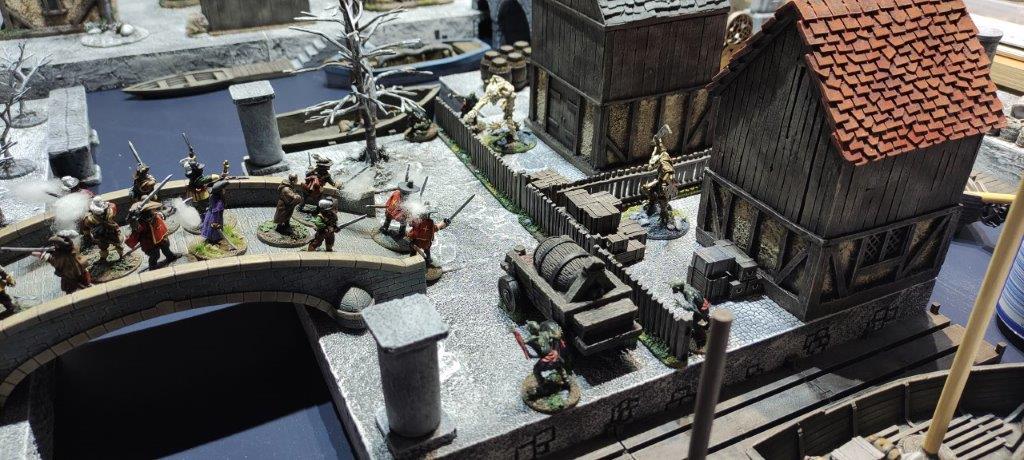
As they fought these giants, another more terrible foe came into sight – surely this was the evil master and source of the dark magic that had overcome Marstadt.
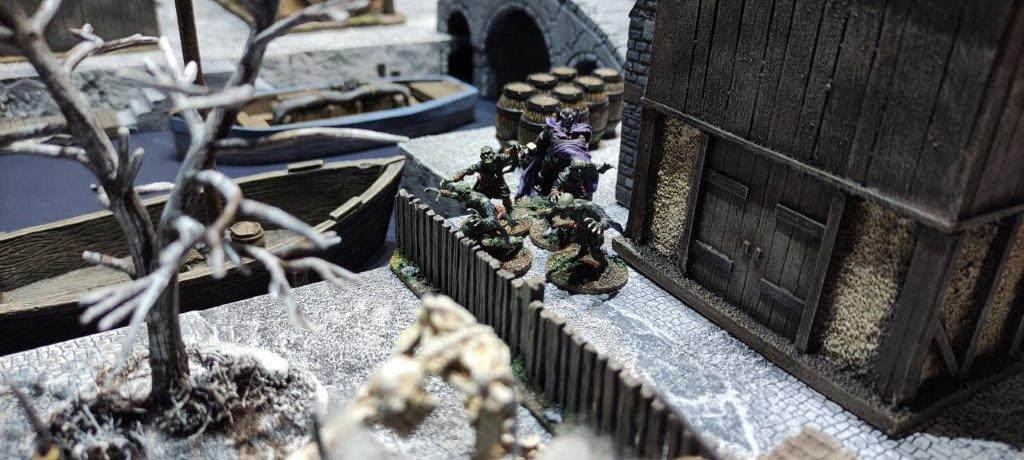
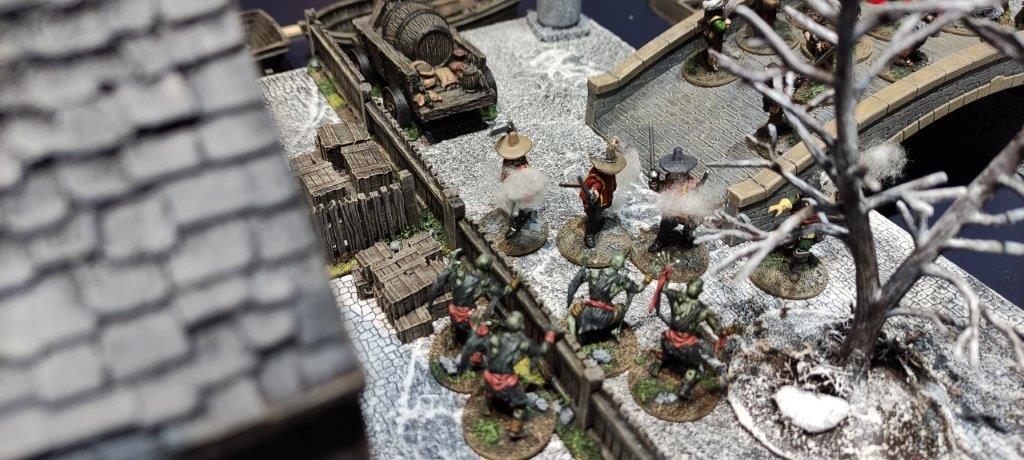
Able to move with a speed beyond the comprehension of men, the vampire killed several before a blow could be struck in return. However, after a bloody fight, and with his minions destroyed, the master was finally struck down by Mockern and his officers.
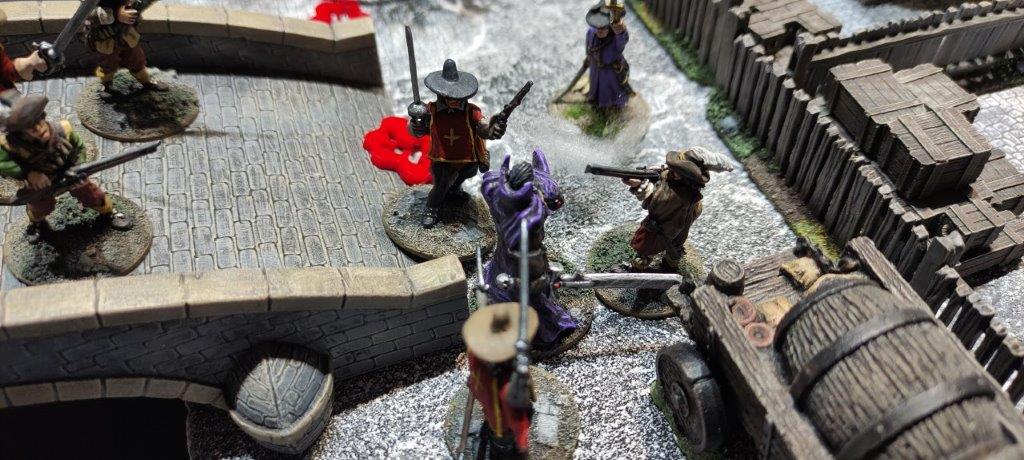
With the fall of the enemy’s leader, the fighting ended abruptly and the survivors were able to catch their breath. As the priest carried out his duty to the dead and wounded, the soldiers continued their search for survivors, while Captain Mockern investigated the mysterious ship moored in the harbour. What would he discover? That’s maybe something for next time.
Postscript
This was a scenario I game-mastered for my mate Jase, who played the part of the stout investigators. We used our usual mildly-modified variant of GW’s Legends of the High Seas, with special rules and stats for the enemy monsters and how/when they appeared, etc. It was good fun to play and quite tense at times, as the under-pressure Schwarzburgers dashed about, fought valiantly and desperately reloaded their guns. Hopefully we’ll continue the story soon.

